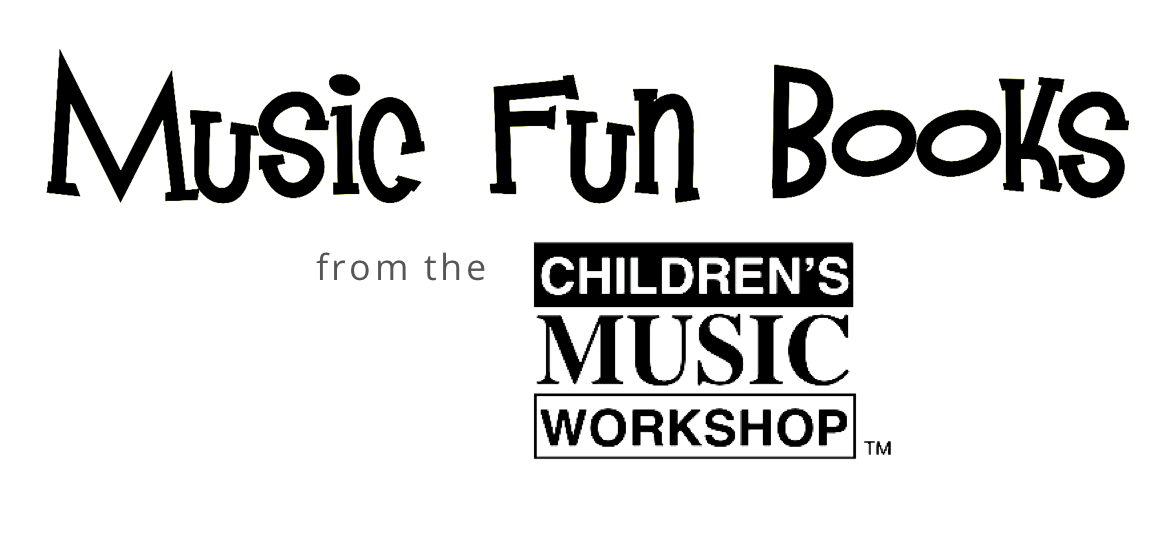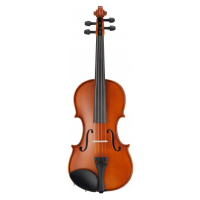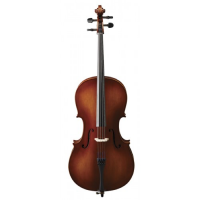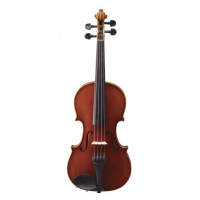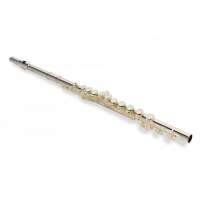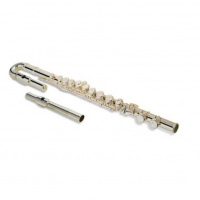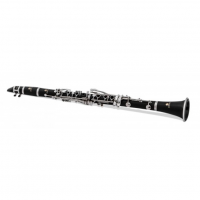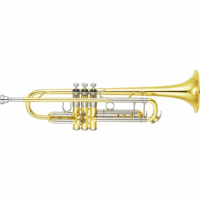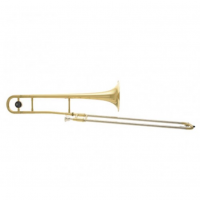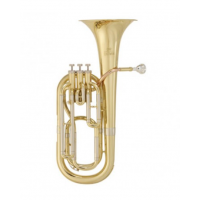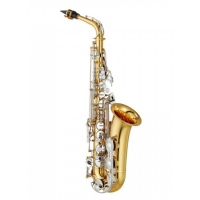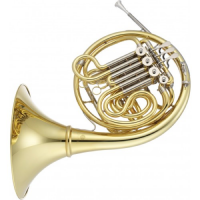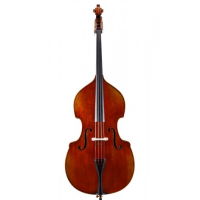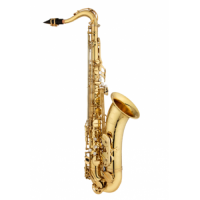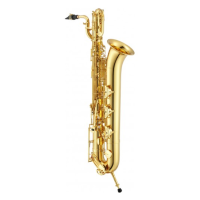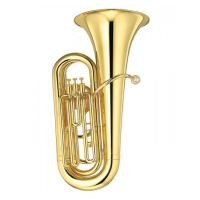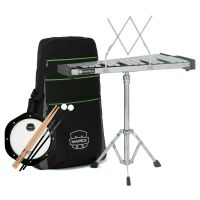Parts of the Saxophone
If you have played a saxophone for a period of time, then you might already know all the parts and pieces of a modern saxophone listed below. The sax's famous tone is heard widely in jazz and classical music as well as rock and country music.
To be the best you can be at your sax playing, you should know all the common names of the parts of the saxophone and what function they perform. You should also know how individual saxophone parts can be removed and replaced, how sax parts should be serviced and maintained and what to do if you think a part of your student saxophone is damaged or broken.
Let's learn about about the anatomy of a typical saxophone from end to end. If you'd like to jump ahead, use the anatomy chart above to click a sax part you'd like to read about first.
WHAT IS THE BELL?
The bell is where the wave of sound emerges from the saxophone and usually ends in a decorative flare. Depending on the size and register of the saxophone, the bell might be aimed up or aimed down.
The bell is a common place for decoration of the instrument, since it is prominently seen by the listener. Different platings, delicate scroll work, engravings and more are common features.
The best place to hold your saxophone is by the bell. The bell can be lightly polished with a soft cloth to remove fingerprints. Never put the sax down on the ground balanced on the end, which will quickly scratch the bell visibly.
Always clean the bell after touching with bare hands if you notice any dirt or fingerprints. Oil and moisture from your hands can break down the finish of the trumpet over time if not removed promptly.
Click to return to anatomy chart
WHAT IS THE BODY?
The body of the saxophone is the lower end of a cylindrical tube that begins where the neck terminates and ends at the bell. The body is crafted of thin brass plated in a variety of precious metals, including gold, silver and nickel. The shape and size of the sax body varies widely depending on the type of saxophone -- from rail straight to deep U-bends -- but always ends in a flare.
Tone holes are found all up and down the body and number between twenty and twenty-four depending on the sax. These holes are in several different sizes depending on where they are placed.
Soldered posts are seen on the body, supporting an elegantly complicated system of moving rods, keys and key cups.
The body's brass form is typically given additional lacquering or plating to help preserve the shine of the sax and keep oxygen from tarnishing the metal. Clear acrylic lacquer is common, though some instruments have colored lacquer and even plating with silver and gold.
Click to return to anatomy chart
WHAT IS THE BOW?
The bow of the saxophone is the bottom end where many of the styles of sax make a u-turn and head back up before ending at the flared bell. The bow is necessary from an acoustic standpoint because the lower register horns would become very long and unwieldy if rendered in a completely straight style.
Click to return to anatomy chart
WHAT IS THE KEY GUARD?
The key guard covers several important key holes that are located in an area most likely to be hit accidentally against surrounding objects or furniture below, by the bow of the body.
Bent keys are very common on saxophones as the result of momentary carelessness by the player.
Key guard or no, it is vital to preserve the safety of your keys to avoid expensive repairs to the saxophone.
Click to return to anatomy chart
WHAT ARE THE KEYS?
Saxophone keys are small metal cups filled with a thin layer of padding which expose or cover the tone holes. Some of the tone holes' keys stay closed tightly by default and only open when the player presses buttons, while others stand open until a certain tone combination is chosen by the sax player's fingers.
It is important to regularly inspect the seal of the keys to ensure that no air is escaping when they are closed. Even a small amount of air leakage can have an adverse effect on your sound.
The keys are often decorated with lovely inlays of mother of pearl or plastic, which contrast well with the shiny metal of the horn.
Leather is the most common material used in the padding.
Click to return to anatomy chart
WHAT IS THE LIGATURE?
The saxophone ligature holds the sax reed into the mouthpiece firmly so the player's physical actions are clearly translated into a full sound through consistent vibration. It is shaped like a clamp.
Common materials used to make ligatures are leather, metal and plastic.
The player has many options for sax ligatures, though not all mouthpieces and ligatures are exactly compatible so it is important to test them to ensure their fit.
The more experienced player can achieve some variation in tone by trying different positioning versus the tip of the mouthpiece. Closer to the tip tends to yield a sharper sound, while further away softens the tone.
Click to return to anatomy chart
WHAT IS THE MOUTHPIECE?
The saxophone mouthpiece is located at the end of the instrument's neck and acts as an interface between the player and the resonant body of the saxophone. These delicate parts are crafted of a wide variety of industrial and organic materials, including the most common hard rubber ("vulcanized rubber"), plastic and metals.
The design of the saxophone mouthpiece is not too far from that of the clarinet, but the sax version is bigger and has a larger chamber inside it. Just as you see with the clarinet, a single reed is used to produce the sound.
The player uses the combination of a stream of air and the shape of the mouth (as determined by jaw and lip muscles) to produce a specific vibration in the reed. This vibration is amplified by the horn's shape to produce a full rich sound.
While beginning players might wish to start with standard mouthpieces, more advanced players will find a wide range of options to suit their own playing style and desired sound. Mouthpieces can be found many sizes of chambers, allowing the tone to adjust from a warmer tone to sharp and piercing.
There is also plenty of reed options to suit every player, including the basic categories that are intended for each size of saxophone. Occasionally you will see a player use a clarinet reed.
Click to return to anatomy chart
WHAT IS THE NECK?
The neck is a conical metal tube that bridges between the mouthpiece and the body of the saxophone. The mouthpiece end is wrapped in cork to allow for a tight seal with the mouthpiece while also allowing easy connection and removal.
The octave key is located on the sax neck.
The shape of the neck shows a lot of variation depending on the register of the horn.
Click to return to anatomy chart
WHAT IS THE NECK CORK?
The neck end of the saxophone is covered in a thin layer of cork, allowing the mouthpiece to connect to the neck easily while maintaining a tight air seal. It is wise to treat your sax's neck cork with a small amount of professional cork grease on occasion to keep it from getting overly dry.
Click to return to anatomy chart
WHAT IS THE NECK SCREW?
The neck screw tightens the seal of the upper end of the body, holding the neck firmly in place after it has been inserted into the body.
Click to return to anatomy chart
WHAT IS THE OCTAVE KEY?
The octave key is a special key found on the neck of the saxophone that pivots on the octave pin. This key helps the player achieve different registers on the saxophone.
Click to return to anatomy chart
WHAT IS THE OCTAVE PIN?
The octave pin acts as a support and pivot point for the octave key. It protrudes slightly out beyond the end of the sax body, exposing it to possible harm when the saxophone is unassembled.
Be sure to fit an end plug into the saxophone before storage to help protect the octave pin.
Click to return to anatomy chart








